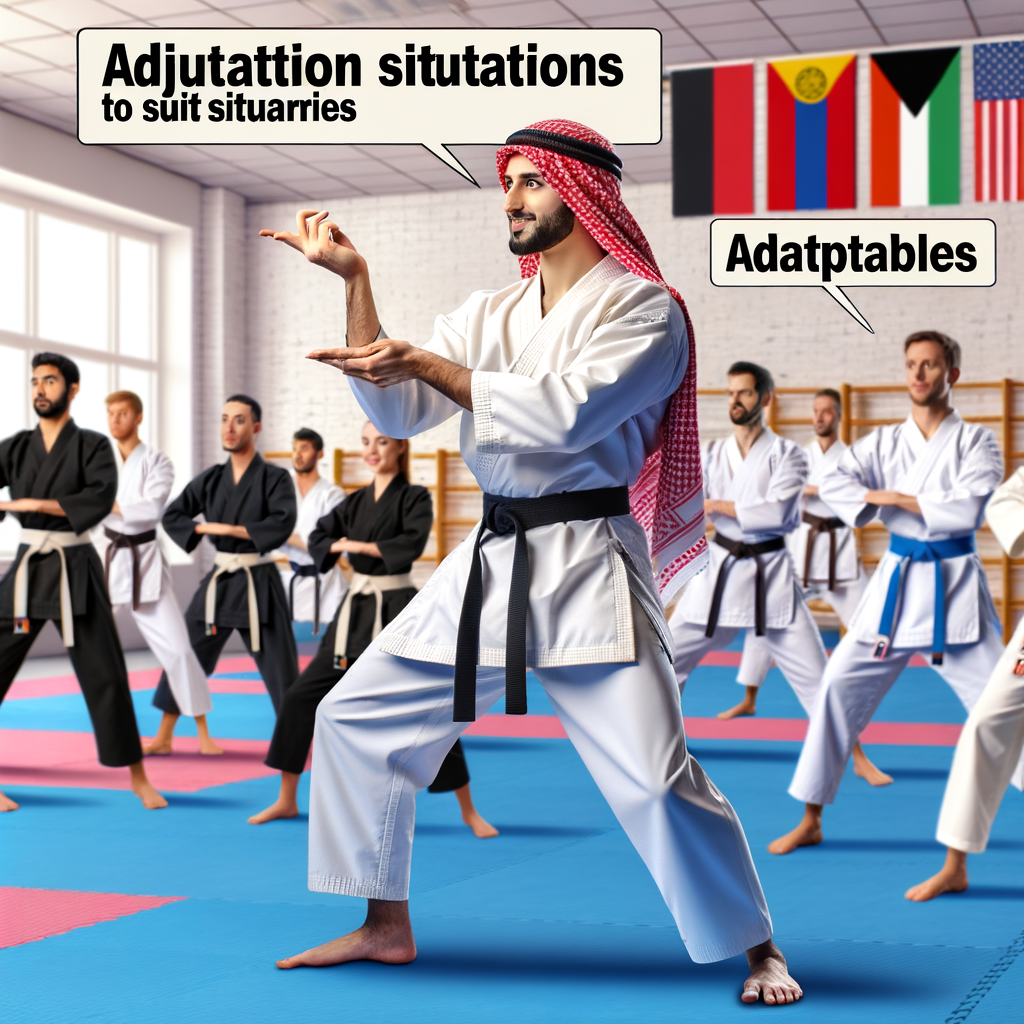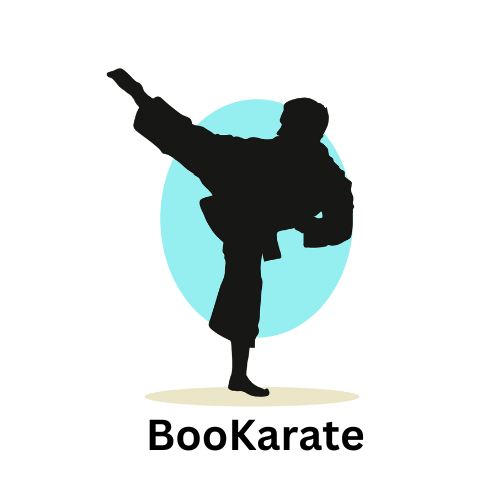
Introduction to Karate Techniques
Welcome to the exciting world of Karate, a martial art that combines strength, precision, and discipline. In this section, we will delve into the basics of Karate and explore some of the different techniques used in this martial art.
- Understanding the basics of Karate
Karate, originating from Japan, is a martial art that emphasizes striking techniques, such as punching, kicking, knee strikes, and elbow strikes. It also includes open hand techniques like knife-hands, palm-heel strikes, and spear-hands. Karate is not just about physical strength; it also involves mental focus and discipline.
The fundamental principle of Karate is the ‘kata’, a sequence of moves that simulates defense and counter-attack against multiple opponents. There are many different ‘katas’ in Karate, each with its unique set of moves and techniques.
- Exploring different Karate moves
There are numerous techniques in Karate, each with its unique purpose and execution. Here are a few examples:
| Technique | Description |
|---|---|
| Punch (Tsuki) | This is a basic Karate move where the fist is thrust straight forward. |
| Kick (Keri) | Kicks in Karate can be delivered in several ways, including front kicks, side kicks, and roundhouse kicks. |
| Strike (Uchi) | Strikes are delivered with different parts of the hand, such as the side, the back, or the palm. |
| Block (Uke) | Blocks are defensive moves used to stop or deflect an opponent’s attack. |
These are just a few examples of the many techniques in Karate. Each move requires practice and precision to master. Remember, Karate is not just about physical strength, but also about mental focus and discipline.
In the following sections, we will delve deeper into the adaptation of these techniques in various situations, how to adjust your skills during Karate training, and the art of adapting Karate techniques. Stay tuned!
Adaptation in Martial Arts
In the world of martial arts, the ability to adapt is a crucial skill. It is not just about learning a set of moves and repeating them. It’s about adjusting your techniques based on the situation at hand. Let’s delve deeper into this concept.
The Importance of Adaptation
Adaptation in martial arts is a vital aspect that separates a novice from a seasoned practitioner. It involves two main areas:
- Adapting to different opponents
- Adjusting to different environments
Every opponent is unique, with their own set of strengths and weaknesses. A good martial artist can quickly identify these traits and adjust their strategy accordingly. For example, if your opponent is taller, you might focus more on low kicks and sweeps. If they are stronger, you might rely more on speed and agility.
Whether you’re in a spacious dojo or a cramped alleyway, your environment can greatly affect your strategy. In a confined space, you might need to use more close-range techniques. In a larger area, you might have more freedom to use long-range kicks and movements.
Adaptation is not just about survival, but also about growth. As Bruce Lee once said, “Adapt what is useful, reject what is useless, and add what is specifically your own.” This is the essence of adaptation in martial arts.
Remember, the key to mastering martial arts is not just about learning techniques, but also about learning how to adapt them to different situations. This is what makes a true martial artist.
Examples of Adaptation in Karate
Adapting to different situations is a crucial aspect of Karate. Let’s take a look at two case studies that highlight how Karate techniques can be adapted in various scenarios.
-
Case Study: Adapting Karate Techniques in a Crowded Environment
Imagine you’re in a crowded place, like a busy market or a packed train station. The space for movement is limited, and traditional Karate moves might not be practical. In such scenarios, adapting your Karate techniques becomes essential.
For instance, instead of executing a high kick, which requires ample space, you might opt for a low kick or a punch. These moves are more suitable for crowded environments as they require less space and are less likely to attract attention. This adaptation not only allows you to defend yourself effectively but also ensures the safety of those around you.
-
Case Study: Adjusting Karate Moves for Different Body Types
Not everyone has the same body type. Some people are tall and thin, others short and stout. The effectiveness of Karate techniques can vary greatly depending on one’s body type. Therefore, it’s important to adjust your Karate moves according to your physique.
For example, if you’re a taller individual, you might find it beneficial to use your long legs for high kicks. Conversely, if you’re shorter, you might find that low kicks and punches are more effective. Understanding your body type and adjusting your Karate techniques accordingly can greatly enhance your performance in practice and competition.
In conclusion, the art of Karate is not rigid. It’s a flexible discipline that encourages practitioners to adapt their techniques according to the situation and their body type. This adaptability is what makes Karate a versatile and effective martial art.
Different Situations in Karate
In the world of Karate, one must be prepared for a variety of situations. Understanding the scenario you’re in is crucial to making the right moves and decisions. Let’s delve into the process of understanding a scenario in Karate.
Understanding the Scenario
When faced with a situation in Karate, whether it’s a sparring match or a real-life self-defense situation, there are two key steps to understanding the scenario: assessing the situation and identifying key factors.
- Assessing the Situation
- Identifying Key Factors in the Scenario
The first step in understanding a Karate scenario is to assess the situation. This involves taking in the environment, the opponent, and the circumstances. For instance, in a tournament, you would consider the rules, the size of the ring, and the style of your opponent. In a self-defense situation, you would assess the threat level, the number of opponents, and possible escape routes.
Once you’ve assessed the situation, the next step is to identify key factors. These are elements that could significantly influence the outcome of the scenario. In a tournament, key factors might include your opponent’s skill level, their preferred techniques, and their stamina. In a self-defense situation, key factors could be the aggressiveness of the attacker, their size, and any weapons they might have.
By understanding the scenario, you can make informed decisions about how to react and what techniques to use. This is a crucial part of mastering Karate and becoming a proficient martial artist.
Adapting Karate Skills for the Scenario
When it comes to Karate, one size does not fit all. The beauty of this martial art lies in its flexibility and adaptability. Depending on the scenario, you may need to adjust your techniques. Let’s explore how to do this effectively.
-
How to adapt your Karate techniques for different scenarios
Adapting your Karate techniques to different scenarios is a skill that requires practice and understanding. Here are some steps to guide you:
- Assess the situation: Before you decide which technique to use, take a moment to assess the situation. What is the threat level? What is the environment like? Your answers will guide your choice of technique.
- Choose the right technique: Not all Karate techniques are suitable for every situation. For example, a high kick might not be the best choice in a confined space. Choose a technique that fits the scenario.
- Practice: The more you practice adapting your techniques, the better you will become at it. Try to train in different environments and against different types of opponents to improve your adaptability.
-
Key takeaways for situational Karate techniques
Adapting your Karate techniques to different situations is a crucial skill. Here are some key takeaways:
Key Takeaway Explanation Adaptability is key Being able to adjust your techniques to fit the situation is a vital part of Karate. Assessment is crucial Before you can adapt, you need to understand the situation. This requires quick thinking and assessment skills. Practice makes perfect The more you practice adapting your techniques, the better you will become at it.
Karate Training Adaptation
Adapting your karate training to meet specific needs or goals is a vital part of becoming a proficient martial artist. This section will delve into how you can adjust your training regimes and provide a case study of training adaptation for a karate tournament.
Adjusting Training Regimes
Adjusting your karate training regime can be a game-changer. It can help you focus on specific goals, whether it’s improving your strength, speed, or technique. Let’s explore how you can modify your training and a case study of training adaptation for a karate tournament.
- How to modify your training for specific goals
- Case study: Training adaptation for a Karate tournament
Modifying your karate training for specific goals involves identifying what you want to achieve and tailoring your training accordingly. For instance, if your goal is to improve your speed, you might want to incorporate more agility drills into your routine. On the other hand, if you aim to enhance your strength, weight training could be beneficial. Remember, it’s essential to maintain a balance in your training to avoid overworking certain muscle groups and neglecting others.
Let’s consider the case of a karateka preparing for a tournament. In this scenario, the goal is to perform optimally in the competition. The training regime might be adjusted to include more sparring sessions to mimic the tournament setting. Additionally, the karateka might focus on improving their endurance to last longer in fights. This case study illustrates how training can be adapted to meet specific goals, in this case, winning a karate tournament.
In conclusion, adapting your karate training regime is crucial for achieving your martial arts goals. Whether you’re preparing for a tournament or simply looking to improve your skills, a tailored training regime can help you get there.
Continuous Improvement in Karate
Just like in life, the journey of learning Karate is a continuous one. It’s not just about mastering the techniques, but also about constantly improving and evolving. Let’s delve into the role of continuous learning in Karate and how you can keep enhancing your skills.
- The role of continuous learning in Karate
- How to keep improving your Karate skills
- Regular Practice: Practice makes perfect. The more you practice, the better you will become. Make sure to dedicate time each day to practice your moves and techniques.
- Seek Feedback: Don’t be afraid to ask your instructor for feedback. They can provide valuable insights and tips to help you improve.
- Stay Open to Learning: Always be open to learning new things. Whether it’s a new technique, strategy, or philosophy, there’s always something new to learn in Karate.
- Participate in Competitions: Competitions can be a great way to test your skills and learn from others. They can also provide motivation to train harder and improve.
Continuous learning in Karate is crucial for several reasons. First, it helps you to stay updated with the latest techniques and strategies. Karate is a dynamic martial art, and new methods are always being developed.
Second, continuous learning helps you to improve your physical fitness and mental toughness. It’s not just about learning new moves, but also about building strength, flexibility, and endurance. And finally, continuous learning keeps you motivated and engaged. It gives you a sense of progress and achievement, which can be very rewarding.
Improving your Karate skills is a lifelong journey. Here are a few tips to help you on this path:
In conclusion, continuous improvement in Karate is a journey of constant learning and practice. It’s about staying motivated, seeking feedback, and always being open to new learning opportunities. Remember, the goal is not to be better than others, but to be better than you were yesterday.
Karate Skills Adjustment
Adjusting your karate skills is a crucial part of your martial arts journey. It involves understanding your own style and making necessary modifications to improve your performance. Let’s delve into this process.
Understanding Your Own Style
Every karate practitioner has a unique style. It’s a blend of your physical abilities, mental strengths, and personal preferences. Understanding your own style is the first step towards adjusting your karate skills.
- Identifying Your Strengths and Weaknesses
- How to Adjust Your Karate Techniques to Suit Your Style
Start by identifying your strengths and weaknesses. Maybe you have a powerful punch but struggle with high kicks. Perhaps your speed is impressive, but your endurance needs work. It’s essential to be honest with yourself during this process. Remember, every weakness is an opportunity for improvement.
Once you’ve identified your strengths and weaknesses, it’s time to adjust your techniques. If you’re quick and agile, focus on techniques that require speed. If you’re strong but not as fast, work on power moves. Always remember to maintain a balance between your strengths and weaknesses. This will help you become a well-rounded karate practitioner.
In conclusion, understanding and adjusting your karate skills is a continuous process. It requires self-awareness, honesty, and a willingness to improve. So, keep practicing, keep learning, and keep growing in your karate journey.
Adapting to Your Opponent’s Style
One of the most important skills in Karate, and indeed in any martial art, is the ability to adapt to your opponent’s style. This involves two key steps: first, understanding your opponent’s style, and second, adjusting your own moves to counter it. Let’s explore each of these steps in detail.
- How to read your opponent’s style
- Adapting your Karate moves to counter your opponent’s style
Reading your opponent’s style is all about observation and analysis. Watch how they move, how they attack, and how they defend. Do they favor a particular side? Do they have a preferred set of moves? Are there patterns in their fighting style? These are all questions to ask yourself during a match. Remember, every opponent is different, so it’s crucial to stay alert and adaptable.
Once you’ve understood your opponent’s style, the next step is to adapt your own moves to counter it. This doesn’t mean copying their style, but rather adjusting your tactics to exploit their weaknesses. For example, if your opponent tends to attack aggressively, you might focus on defensive moves and counterattacks. If they’re more defensive, you might need to be more proactive and force them out of their comfort zone.
Adapting to your opponent’s style is a dynamic process that requires quick thinking and flexibility. But with practice, it can become a powerful tool in your Karate arsenal.
| Key Takeaways |
|---|
| Reading your opponent’s style involves careful observation and analysis. |
| Adapting your moves means adjusting your tactics to exploit your opponent’s weaknesses, not copying their style. |
| Adaptation is a dynamic process that requires quick thinking and flexibility. |
Conclusion: The Art of Adapting Karate Techniques
As we reach the end of our journey into the world of Karate, it’s essential to reflect on the key points we’ve discussed. The art of adapting Karate techniques is not just about learning a set of moves; it’s about understanding the principles behind them and applying them to different situations.
- Summarizing the importance of adaptation in Karate
- Final thoughts on mastering situational Karate techniques
Adaptation in Karate is crucial. It’s what separates the novice from the master. The ability to adjust and adapt your techniques based on the situation at hand is a testament to your understanding and mastery of the art. It’s not just about knowing the moves; it’s about knowing when and how to use them.
Remember, Karate is a martial art that emphasizes the harmony of mind, body, and spirit. It’s not just about physical strength, but mental agility and adaptability. The ability to adapt is a reflection of your understanding of this harmony.
Mastering situational Karate techniques is a lifelong journey. It’s not something that can be achieved overnight. It requires dedication, practice, and a deep understanding of the principles of Karate.
Remember, each situation is unique. What works in one situation may not work in another. The key is to understand the principles behind the techniques and adapt them to the situation at hand. This is the true art of Karate.
In conclusion, the art of adapting Karate techniques is a journey of self-discovery. It’s about understanding yourself, your strengths, and your weaknesses. It’s about learning to adapt, to change, and to grow. It’s about mastering the art of Karate.






